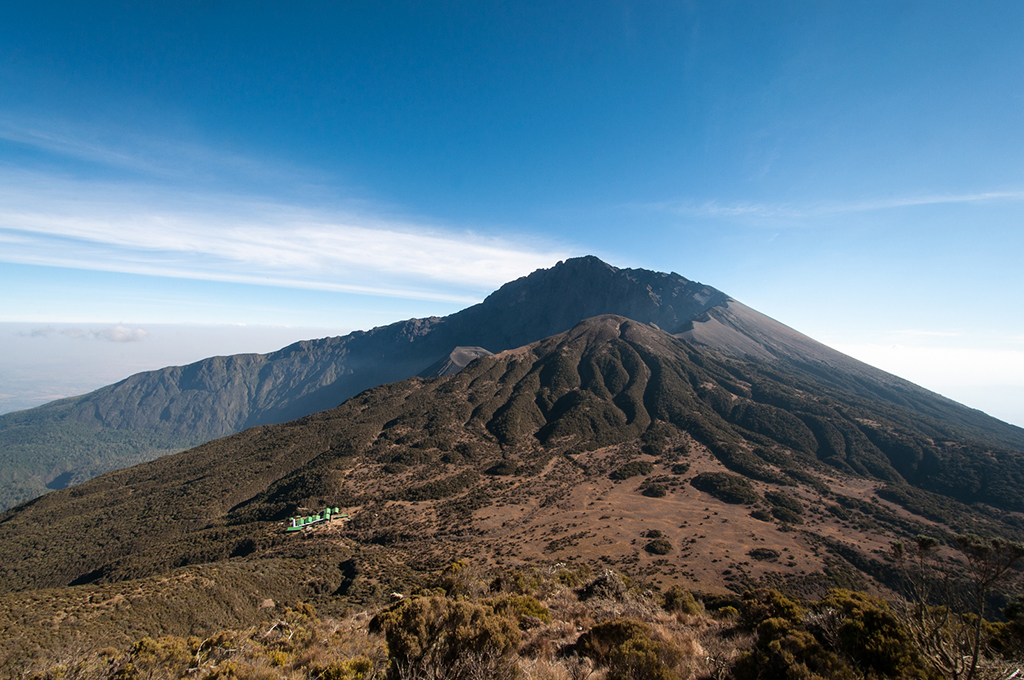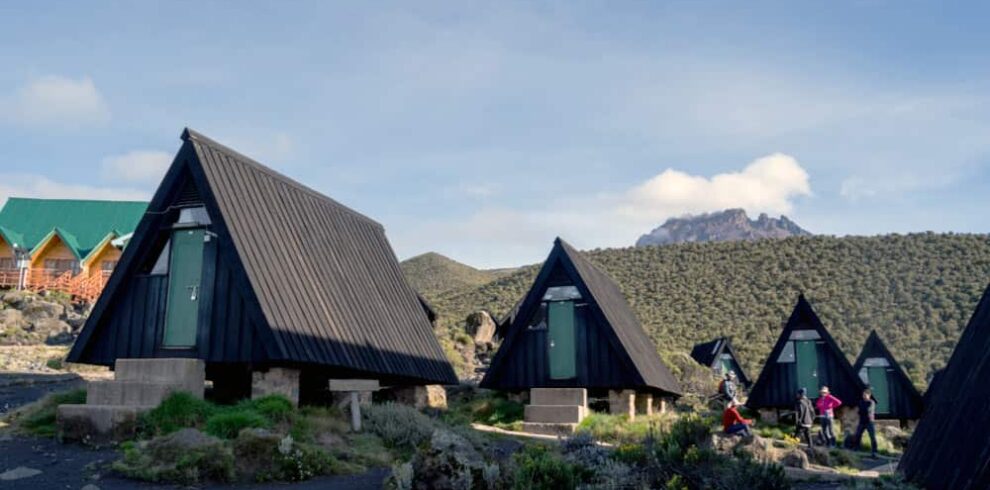Mount Meru is one of the major attractions of Arusha National Park. The full ascent requires at least three days. The route takes climbers through a series of natural environments with a variety of flora and fauna and an interesting mixture of nature and culture.
4 Days Mount Meru Trekking Overview
Mount Meru has only one route to the top and can be attempted for three days, but it is highly recommended to do it in four days for acclimatization purposes. Many mountaineers use Meru to acclimatize before attempting to climb Kilimanjaro. There is less snow on Meru due to the lower altitude of the volcano eruption.
One thing to keep in mind is that while climbing Mount Meru, you must be accompanied by an armed ranger(s) as you pass through the Arusha National Park. This is the perfect opportunity to enjoy a walking safari and observe African buffaloes, zebras, black and white colobus monkeys, and other wildlife.
Itinerary
Duration: 5-7 hours of hiking
First day of your 4 Days Mount Meru Trekking after early morning breakfast in Arusha (1400 m), you will be picked up from your hotel and brought to the Momella Gate in Arusha National Park. At this time, the porters will organize and pack the belongings for the hike while you and your guide register with the Tanzania National Park (TANAPA). You will then begin your ascent in Arusha National Park.
The first day of hiking is similar to a walking safari; you should expect to see giraffes, zebras, antelope, buffalo, and potentially elephants near the trail. Due to the high possibility of spotting wildlife, an armed ranger, hired through the National Park, is required to hike with our team for the duration of the hike. As you continue hiking, you will pass the Ngarenanyuki River and a beautiful waterfall at the base of Mt. Meru. Upon arriving at Miriakamba Hut (2500 m), your chef will prepare a hot dinner and washing water for you. Enjoy the beautiful sunset and overnight.
Duration: 3-5 hours of hiking
After breakfast, you will start ascending up the steep trail along the ridge of the saddle. You may see various wildlife along the way! The trail has views of Mt. Meru Crater and the Ash Tray. When you arrive at camp, you have the option of hiking Little Mt. Meru (3820 m) with your guide to further acclimate. You will be served an early dinner, so you can receive ample rest before your midnight summit attempt. Get to sleep by 19h00!
Duration: 10-12 hours of hiking
Your guide will wake you at 00:30 for tea and biscuits. You will then begin your summit attempt at 1:30 am. The trail starts off on a steep grade from Rhino Point (3800 m) to Cobra Point (4350 m). In the last hour of the hike, you will scamble on a rocky ridge between the crater and inner cliffs of Meru. You will reach the summit of Meru (4565 m) at sunrise with spectacular views of Mt. Meru Ash Tray and Mt. Kilimanjaro. Enjoy your views then descend to Saddle Hut for a short break. You will then continue descending to Miriakamba Hut (2500 m) for dinner and overnight.
Duration: 2-3 hours of hiking
After a long rest and breakfast, we will begin our final descent to Momella Gate. We will hike through forests and meadows where it is likely to spot wildlife. At the base of Mt. Meru, you will be greeted by our driver who will take you back to Arusha Marking the end of your 4 Days Mount Meru Trekking
What you will get
Cost Includes
- Transfer to/from Arusha National Park
- Overnight stays in Mountain Huts
- Professional, experienced, mountain guides
- All Park fees
- Rescue fees
- All meals while on the Mountain
- Guides, Porters, cook salaries, and park fees
- Large portions of fresh, healthy nutritious food
- Clean, purified drinking water
- Crisis management and safety procedures
- Fair and ethical treatment of porters
- Airport transfers
Cost Excludes
- Accommodation in Arusha (Can be arranged upon request )
- Tanzania Visa
- Gratuity
- Personal Expenses (e.g. laundry, telephone, beverages, etc.)
- Meals not listed above
- Optional Tours (short safari after your climb etc)
The full ascent of Mount Meru typically requires at least three days. However, it’s highly recommended to allocate four days for acclimatization.
Yes, as Mount Meru is located within Arusha National Park, climbers are required to be escorted by armed rangers. This is for your safety as you pass through the park, where you may encounter wildlife such as African buffaloes, zebras, and monkeys.
boots and footwear are crucial for a successful mountain climb. In this article, we’ll provide guidelines on the key features to look for in a pair of boots and recommend some affordable options.
Remember that your feet are what will help you reach the top and come back down safely, so it’s important to follow the tips in this article to avoid sore feet, blisters, and lost toenails. Check out our guide to hiking Mt Kilimanjaro and download our Kilimanjaro equipment list for more information.
When looking for trekking boots, there are three main features to consider: fit, quality, and use. A wrong decision on any of these could result in foot injuries, back pain, lost toenails, and blisters.
Fit is the first characteristic to look for. To test the fit of a boot, put your foot in the boot and slide it forward until your toes reach the front of the boot (make sure you’re wearing an average cushioned sports sock). Then, take your index finger and slide it down the back of the boot between your heel and the boot support.
A well-fitting boot should allow you to insert your finger without too much resistance. If you can’t insert your index finger, the boot is too small, while if your finger fits too easily, the boot is too big. A snug fit, with your index finger in the back of the boot, is the right fit.
Quality doesn’t have to be expensive, and you can find affordable trekking boots that are of great quality. The following features define good quality boots:
– Medium to high tops for sturdy ankle support. The higher the top, the heavier the boot.
– The sole of the boot should have a high rubber content and deep lugs for better traction. The deeper the lugs, the heavier the boot.
– Medium to heavy weight. Heavy boots are durable and cushioned, but they can be tiring to hike in. We recommend medium-weight boots.
– Waterproof. This is standard today, and Gore-Tex material is recommended for improved waterproofing. Combined with waterproof socks, you can keep your feet dry.
– The lacing system should incorporate D-Strings and speed hooks for better ankle support and fast lacing.
Once you have a good-fitting pair of boots with similar characteristics, it’s essential to break them in. Never arrive at Kilimanjaro with brand-new boots that you’ve never worn. Wear your boots as often as possible before your hiking date and undertake 2-3 long-distance treks (4-5 hours a day) to break them in.
Accommodation during the trek consists of mountain huts. Miriakamba Hut (2500m) and Saddle Hut (3500m) are the main overnight stops during the ascent.











